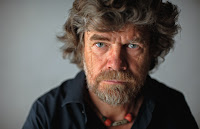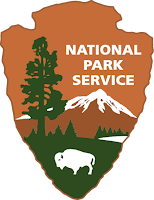February 2012 - Jared Townsley, 32, of Tigard was found dead below Crater Rock after what was believed to have been a fall in icy conditions.
December 2009 - Reid Glacier: Luke T. Gullberg, 26, of Des Moines, Washington is found dead at the 9,000-feet level of Mt. Hood on a day-climb with two friends.
January 2009 - Hogsback: Brooke Colvin, 31, is killed after being struck by falling ice in the area below the Pearly Gates and knocked several hundred feet down the mountain. She was climbing with her husband, 33-year-old Thad Stavn.
July 2008 - Cooper Spur: Gary Lee, 55, is descending from the summit on the Cooper Spur route when he's struck by a falling rock. His body is located 1,000 feet below, just above the Elliot Glacier.
December 2006 - Cooper Spur: Kelly James, Brian Hall, and Jerry Cooke attempt to scale the difficult north side of the mountain and perish in a storm. James' body is later found in a snow cave near the summit. Hall and Cooke's bodies are not found.
November 2004 - Sandy Glacier: Kenny D. Kasselder, 37, dies after falling into a crevasse about 30 feet deep on the Sandy Glacier on the west side.
March 2003 - South Side: Fred Frauens, 49, leaves Timberline Lodge on a solo snowshoe hike up the south slope. He is last seen at 9,500 feet.
May 30, 2002 - South Side: Three groups of climbers -- nine people in all -- fall into a crevasse on the south slope. Rick Read, 48, and Bill Ward, 49, both of Forest Grove, and John Biggs, 62, of Windsor, Calif., die from the fall.
May 24, 2002 - Cooper Spur: Snowboarder Juancarlos Munoz, 30, attempts to snowboard from the summit but dies after falling 2,500 feet onto Eliot Glacier. Munoz, an Argentine, was living in Government Camp and working at Timberline Lodge.
September 2001 - Karoly Janos Orsi, 26, a Hungarian exchange student, disappears on a solo day hike.
August 2001 - Evan Clark, 15, of Hinsdale, Ill., dies after a chunk of ice crushes him near the Cloud Cap hiking area.
June 4, 2000 - Summit: Diana B. Kornet, 29, of Portland, who had reached the summit, slips as she looks over the mountain's northeast side and falls more than 2,500 feet to her death.
May 23, 1999 - Cooper Spur: Carey Cardon, 31, and Tena Cardon, 29, of Hillsboro, who reached the summit, die shortly after starting their descent, falling together about 1,500 feet along the northeast face. One of them slips and pulls the other as they descend the Cooper Spur route.
May 31, 1998 - West Crater Rim: Tom McGlinn, a 39-year-old climbing with a Mazamas climbing class, is buried and killed when snow and rock give way on the mountain's west side near Illumination Rock.
September 6, 1997 - Cooper Spur: Mark Fraas, 40, dies after falling 1,500 feet while climbing the Cooper Spur route on the northeast face.
September 1995 - Cathedral Ridge: Ken Budlong, 45, of Portland disappears on a solo climb via the Cathedral Ridge route in Hood River County.
July 1994 - Cooper Spur: Four climbers roped together fall 700 feet down the Cooper Spur route, stopping at the lip of a crevasse on Eliot Glacier. Ole Groupe, 16, of Pendleton and Jerry Milton, 51, of McMinnville die in the fall. The other climbers are rescued by helicopter.
July 18, 1991 - John Pospisil III, 14, dies when he and his 12-year-old brother, Luke, lose control during an intentional slide and fall into a canyon while descending during a family outing. Luke Pospisil survives.
June 1990 - The body of George W. Ott, 76, of Corvallis, is recovered from the face of Mount Hood after he dies of hypothermia. Ott's widow, Marian, says she did not expect her husband, who had terminal cancer, to return from the trip he had chosen to make by himself.
July 11, 1987 - South Side: Arthur Andersen Jr., 59, of Sherwood, dies when he and two other men fall into the Bergschrund crevasse.
May 13, 1986 - South Side: Seven students and two adults from Oregon Episcopal School freeze to death after being trapped in a whiteout while ascending. Killed are Tasha Amy, 15; Alison Litzenberger, 15; Richard Header,16; Erik Sandvik, 15; Susan Elizabeth McClave, 17; Patrick Francis Mcginness, 15; Erin O'Leary, 15; the Rev. Dr. Thomas Goman, 41, and Marion Horwell, 40.
June 20, 1982 - Leuthold Couloir: While in Leuthold Couloir a large avalanche came down from above and caught one rope team of three climbers. One climber was killed by the crushing action of this type of avalanche.
June 21, 1981 - Cooper Spur: Five people in a group of climbers die in a fall from Cooper Spur while descending. Killed on Mount Hood are Jim Darby, 35, Newberg; Garth Westcott, 35, Bend; Larry Young, 30, Corvallis; George Anderson, 36, Boring; and Leah Lorenson, 39, Vancouver.
June 6, 1981 - Cooper Spur: David H. Turple, 51, of Portland and Bill Pilkenton, 17, of Newberg die in a fall from Cooper Spur to Eliot Glacier.
April 26, 1975 - White River Canyon: A Mazamas mountaineering class attempted to cross White River Canyon and some were caught in an avalanche. One died.
June 20, 1959 - South Side: A group of Explorer Scouts were caught in a wet snow avalanche above the bergshrund and carried into it. One died.



